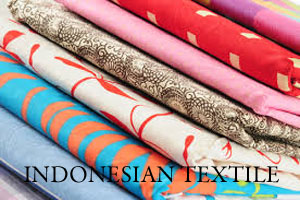
Indonesian textile industry players looking for stronger trade pact as it aims high
YarnsandFibers News Bureau 2014-11-24 17:00:00 – JakartaIndonesia currently ranks ninth in global textiles exports and with the Indonesian textile industry growing steadily, sector players are looking for stronger trade pacts as well as more investment to maintain a competitive edge in the regional and international marketplace.
The export target for 2014 is part of national plans to become the number one globally in textile exports by overtaking China, which is shifting its economy from textiles to services.
Jakarta is aiming for total exports of garments and textiles to reach $75.4bn by 2030 while raising the contribution to global textile exports from 1.8% to 5%.
However, Indonesia faces tough competition from players emerging in South-east Asia that have lower production costs and cheaper labour. Vietnam, for example, has managed to carve out a 3.3% share of global textiles and garments exports and expects to attain a $23.6bn export target for 2014.
There is a huge upside potential for the country’s exports given highly competitive labour costs and attractive demographics, as well as infrastructure reforms under the new government post the election.
Momentum towards that ambition was underlined by profits from the largest Indonesian garment maker, Pan Brothers on October 1. The firm, which manufactures brands such as Nike, North Face and Lacoste, reported a 33.5% rise in net profit for the first half to $6.9m. Its revenue rose 2% to $162.9m thanks largely to export sales, which hit $151.6m.
The firm recently outlined plans for a $70m, three-year expansion to help it tap the growing demand for garments in South-east Asia's emerging markets .
This trend is also evident in Indonesia, where a growing middle class is expected to fuel a surge in local textiles consumption in coming years. Domestic sales are forecast to increase by 7% this year to a value of $7.5bn, according to the Indonesian Textile Association (API) following a 10% decline in 2012-13.
Strong domestic demand for Indonesian textile products remains, despite competition from lower-priced, high-quality imported textile and textile products, as per the US Department of Agriculture (USDA) in an annual report released in April.
In 2013 the US was the largest importer of Indonesian textiles and clothing, at a value of $4.1bn, followed by Japan and Turkey with imports of $1.2bn and $620m, respectively.
However, Indonesia has maintained its position as the sixth-largest textile exporter to the US, unchanged since 2000, Vietnam has jumped to third position from as far back as 82nd in the same period.
According to industry leaders, new trade deals are needed with countries around the globe to secure a long-term future for Indonesian textile exports. To this end, Indonesia has expressed interest in joining the multilateral Trans-Pacific Partnership, a proposed regional free trade agreement (FTA) with 12 members so far including the US. However, the government is still waiting for approval to participate in an FTA that would open opportunities for higher Indonesian textile exports to Europe.
Challenges to achieve this aim remain. A senior official at Pan Brothers said the government needed to do more to tackle the challenges for textile exporters.
While, vice-chief executive Anne Patricia Sutanto is of the view that Indonesia has the potential to become a global supplier of garments. Policies need to be revised in order to attract more investments in this sector and build local competition, as well as facilitate exports to capitalise on Indonesia’s strategic location.
Ade Sudrajat, general chairman of the Indonesian Textile Association (API), said that the country should be doing more to take advantage of a surge in global textile products, highlighting the advancement of other regional players such as Vietnam.
Indonesia's infrastructure costs are high compared to new players mushrooming in the region, such as Vietnam and Cambodia. For example, domestic textile manufacturers saw production costs jump nearly 15% as a result of Indonesia’s electricity tariff hike in May. Electricity now accounts for up to 35% of total production costs for textile companies, a factor that industry leaders say may erode their competitiveness.
The government needs to invest more in the industry to fulfil local demand and reduce dependency on imported raw materials, textiles manufacturers say. Investment is also needed in improving human capital through better training of skilled workers and managers.
More needs to be done in this area from the public sphere in order to help textile manufacturers reach higher levels of business performance. As the quality of education and training of skilled workers and managers has a direct impact on the financial results of the companies
A surge in demand for football shirts during the 2014 World Cup helped Indonesia post textiles sales of $5.3bn in the period from January to August – representing a 4.8% rise on last year’s total of $12.6bn –with an export target of $13.3bn for 2014.
Market Intelligence
Ask for free sample Report

experience
Customer Base
dedicated team
Countries Served Worldwide









